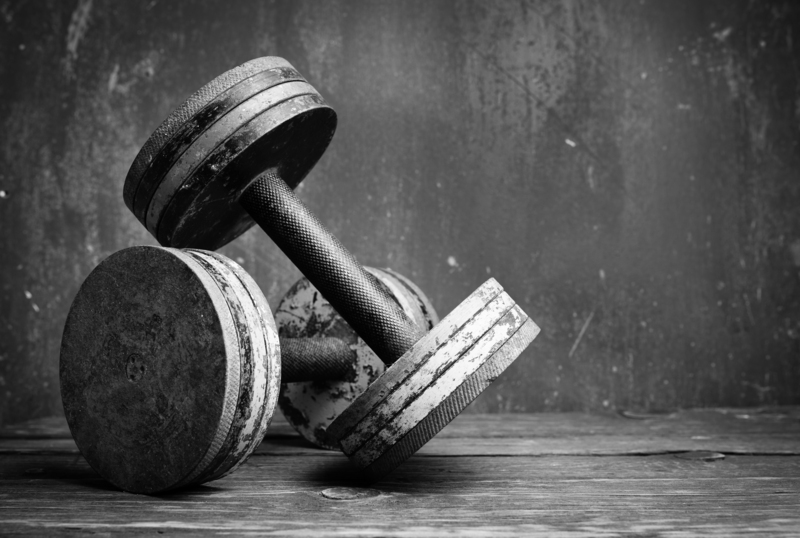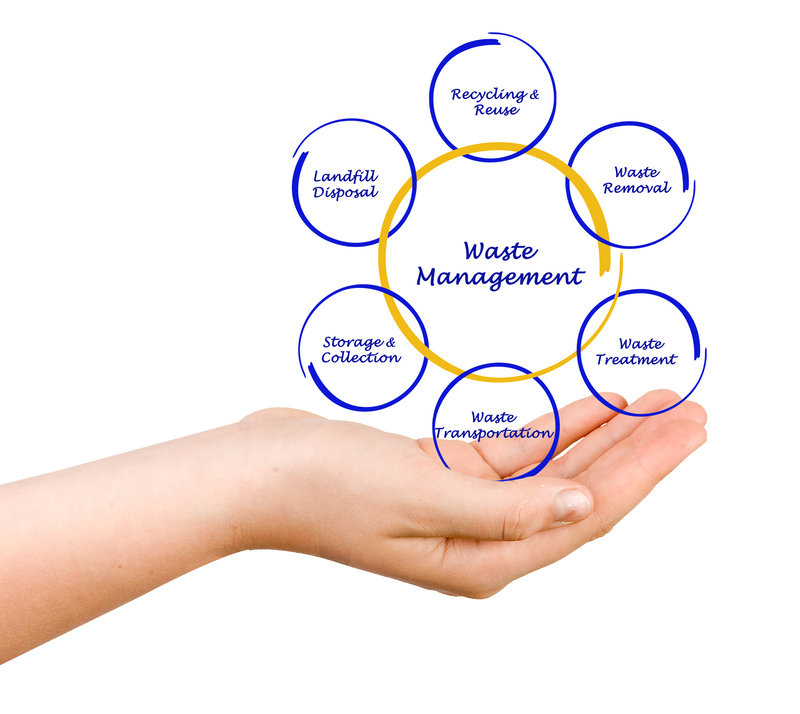What to Expect During a Hoarder Clean Up and Clutter Removal Project
Are you planning a hoarder clean up or tackling a major clutter removal project? These undertakings can be emotionally and physically overwhelming, but with the right knowledge, resources, and support, you can restore safety and order to any environment. This comprehensive guide will walk you through exactly what to expect when undertaking a hoarder clean-up and clutter removal project, from initial assessment to final deep cleaning. Whether you're a homeowner, a loved one, or a property manager, our in-depth article will ensure you're well-prepared for every step of the process.
Understanding Hoarding Disorder and Extreme Clutter
Before diving into the logistics, it's crucial to understand the difference between hoarding and common clutter. Hoarding disorder is a recognized mental health condition characterized by persistent difficulty discarding possessions due to a perceived need to save them. Extreme clutter can pose safety risks, affect quality of life, and even cause legal issues.
- Hoarding: Accumulation of items that truly impedes living spaces and prevents normal use
- Clutter: Excess items or disorganization, but typically not to the extent of interfering with daily life
Professional hoarder clean up and clutter removal services often require sensitivity and expertise, as they deal not only with physical mess but also with the emotional and psychological aspects involved.

Initial Assessment and Planning
Every hoarder clean up project begins with an assessment of the scope and severity. Professionals or organizers will often conduct a walk-through of the property to understand:
- Volume and types of contents (trash, papers, perishables, hazardous waste, sentimental possessions, etc.)
- Access issues and safety hazards (blocked exits, fire hazards, biohazards, pest infestations)
- Structural damage or health hazards (mold, mildew, animal waste)
This initial evaluation is a chance to set clear goals and expectations for the hoarding clean up. You'll develop a plan outlining:
- The timeline for the project
- What items to discard, donate, sell, or keep
- Safety precautions (PPE, cleaning supplies, equipment)
- Support needs (mental health professionals, family, friends)
Many professional clutter removal companies will offer a free consultation or estimate, helping to alleviate anxiety about costs and procedures.
Preparation for a Hoarder Clean Up Project
After planning, the next phase involves thorough preparation:
1. Assembling a Caring and Qualified Team
- Trusted friends or family who are empathetic and collaborative
- Professionals-- such as hoarding clean-up experts, organizers, and sometimes mental health specialists
2. Gathering Equipment and Supplies
- Heavy-duty trash bags and bins
- Protective gear: gloves, masks, boots, coveralls
- Cleaning products: disinfectants, sprays, sponges
- Specialized equipment: shovels, brooms, vacuums, dusters
- First-aid kit
3. Ensuring Safety Protocols
- Ventilating the space to minimize exposure to dust and fumes
- Checking for hidden dangers (sharp objects, pests, structural issues)
- Maintaining clear exit routes at all times
Preparation is essential to minimize risks and make the process efficient and safe.
The Step-by-Step Process of Hoarder Clean Up
Clutter removal and hoarder clean up projects are typically methodical and broken down into manageable phases. Here's a snapshot of what the process usually involves:
Step 1: Categorizing and Sorting
- Establish sorting stations-- Designate areas for items to keep, donate, recycle, or throw away.
- Work room by room-- Focusing on one area at a time prevents feeling overwhelmed.
- Use a systematic approach-- Such as the Four-Box Method: Keep, Donate, Trash, Relocate.
- Handle keepsakes with care-- Sentimental value adds emotional complexity; respect the process and involve the owner in decisions.
Step 2: Removing Trash and Unwanted Items
- Bag and dispose of general refuse and obvious garbage.
- Dispose of hazardous materials according to local regulations (e.g., chemicals, batteries, sharps).
- Coordinate with junk removal and donation services for larger items such as furniture and appliances.
Step 3: Cleaning and Sanitizing
- Sweep, vacuum, and mop floors after debris is cleared.
- Wipe down walls, surfaces, appliances, and fixtures.
- Address problem areas--deal with mold, pests, or biohazards as needed (often by specialists).
Step 4: Organizing Remaining Possessions
- Find designated homes for every kept item (labeling and storage solutions).
- Implement organizational strategies to prevent future clutter build-up.
- Encourage gentle transition to new habits or routines to sustain cleanliness.
Each step requires patience, empathy, and consistent communication--especially if you are working with someone who has emotional stakes in the clutter.
Emotional and Psychological Challenges
Undergoing a hoarder clean up or extensive clutter removal is often about much more than 'just cleaning'. The emotional impact can be intense. Here's what to anticipate:
- Attachment to possessions: Items may represent memories, comfort, or security.
- Feelings of grief, shame, or guilt: Letting go can trigger painful emotions.
- Anxiety and resistance: The thought of discarding items may provoke distress or avoidance.
- Relief and hope: As spaces are cleared, feelings of freedom and optimism are common.
Providing support, patience, and professional mental health resources is crucial for lasting success in a hoarder clean up project.
Health, Safety, and Legal Considerations
A major declutter or hoarder clean up often unveils hidden dangers. Recognizing these risks early makes the project safer and smoother:
- Biohazard exposure: Animal feces, urine, mold, or decaying food may require a professional biohazard remediation team.
- Air quality: Dust, mold spores, and chemicals may worsen allergies or exacerbate respiratory issues.
- Pests: Mice, insects, or even birds may have nested in the clutter.
- Fire hazards: Piled papers and blocked exits can present direct fire and evacuation risks.
- Structural concerns: Water damage, rot, and weakened floors or walls may need attention from a contractor.
- Legal code violations: Landlords or property managers may be required to address code violations or rental issues during a professional hoarder clean up.
After the Clean-Up: Restoring Safety and Comfort
Once the physical clearing is complete, a thorough deep cleaning is essential to restore the home to a safe, livable, and welcoming environment. This might involve:
- Painting or wall repairs where stains or damage occurred
- Replacing flooring if carpets or hardwoods are beyond cleaning
- Refreshing air quality with air purifiers or HVAC cleaning
- Professional sanitization for lasting peace of mind
Post-project, it's wise to establish regular organizational routines or continued support services to help maintain cleanliness and prevent relapse.
How Long Does a Hoarder Clean Up Take?
Project timelines vary widely:
- A simple clutter removal project may take a day or weekend with a few helpers.
- Severe hoarding clean-ups can last several days or even weeks, depending on the size of the home and severity of the accumulation.
Factors that affect duration include:
- Number of rooms and square footage
- Volume and type of contents to remove
- Access limitations (staircases, blocked doors)
- Need for specialized cleaning or repairs
- Cooperation of the person affected by hoarding
Benefits of Hiring Professional Hoarder Clean Up Services
While some families tackle these projects on their own, professional hoarder cleaning companies offer many advantages:
- Experience and specialized training in handling biohazards, heavy lifting, and sensitive situations
- Access to professional equipment for safe, thorough cleaning
- Efficiency and speed: Large teams can accelerate the process and minimize disruption
- Compassionate approach: Companies are trained to handle emotional challenges and work with mental health professionals if needed
- Disposal knowledge: Safe and legal removal of hazardous waste and large items
When selecting a clutter removal or professional hoarder clean up service, look for certified, insured, and well-reviewed providers with demonstrated experience in similar projects.
Aftercare: Maintaining a Clutter-Free Home
The work doesn't end once the home is clean. Lasting change is built through consistent organizational habits and often ongoing emotional support. Consider:
- Setting up a regular cleaning schedule
- Using storage solutions to keep sentimental items organized
- Working with an organizer or counselor for continued progress
- Seeking support groups for hoarding disorder or clutter challenges
Transformation is possible. With the right plan, resources, and compassion, even the toughest hoarder clean up and clutter removal project can result in a safer, healthier, and more joyful living space.

Frequently Asked Questions About Hoarder Clean Up
Is hoarder cleaning dangerous?
- Yes, especially if there are biohazards, pests, or structural issues. Professional cleaners are trained to handle these situations safely.
Will everything be thrown away?
- No. Items are sorted for donation, recycling, or keeping. Emotional attachment is respected throughout the process.
Can hoarder clean up solve the root problem?
- Cleaning removes the clutter but ongoing support or therapy is often required to prevent future hoarding.
How much does clutter removal cost?
- Projects vary widely; simple clean up may cost a few hundred dollars while extensive hoarding remediation may cost thousands. Most companies offer free consultations.
Conclusion: Empowering Change with Hoarder Clean Up & Clutter Removal
Taking on a hoarder clean up or clutter removal project is a courageous step toward reclaiming health, safety, and dignity. By understanding the scope, embracing the emotional journey, and using professional support when needed, you can transform even the most overwhelming space into a haven for productive and peaceful living. If you or a loved one need help with hoarder cleaning services or major decluttering, don't hesitate to seek expert advice--you're not alone, and renewal is possible!